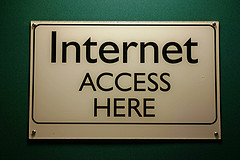I am personally delighted to see my home state of Iowa increasing broadband penetration. Like any big data gathering project, the results are only as good as the data put into the database. I believe that some providers are a little over optimistic on their service availability especially just outside of metropolitan areas. I honestly think that there are more than 2.3% of the households that are not served by wired Internet. Just look at the number of households in Warren county outside of Des Moines with no service. The next step should be to improve the quality of data. In any case the numbers are very high which for a state that has very long loop lengths area-wise.
New research unveiled today by Connect Iowa shows that the broadband availability gap in the state is shrinking, with 93.5% of Iowa residents now having access to fixed broadband of 3 Mbps download or higher, compared to 92.5% last year.
Nonprofit Connect Iowa has been working since 2009 to ensure that Iowans have access to the economic, educational, and quality of life benefits derived from increased broadband access, adoption, and use.
Among the findings of the new broadband availability research are:
- 82.2% of Iowa households can access broadband at advertised speeds of 6 Mbps download/1.5 Mbps upload, meaning that nearly 218,000 households are in areas that may be eligible for Universal Service Fund broadband deployment subsidies
- 80.5% of Iowa households can access broadband at speeds of at least 10 Mbps download/1.5 Mbps upload (excludes mobile and satellite services)
- 96.1% of rural households in Iowa have access to broadband of at Least 768 Kbps download/200 Kbps upload (excludes mobile and satellite services)
- 3.3% of Iowa households have access to broadband speeds of at least 100 Mbps download/1.5 Mbps upload. In October 2011, only 3.2% of households in Iowa had access to these broadband speeds (excludes mobile and satellite services)
- Broadband of at least 768 Kbps download/200 Kbps upload is available to 97.7% of Iowa households, up from 97.6% last October, leaving 28,000 Iowa households unable to connect to basic high-speed Internet (excludes mobile and satellite services)
- 87.2% of Iowa households have the ability to choose broadband service from two or more non-mobile broadband providers (excludes mobile and satellite services)
Note: The data in this report are subject to data validation.
“We are thrilled to see the investment being made by providers and that the work we are doing with our state partners is paying off,” said Connect Iowa State Program Manager Amy Kuhlers. “These latest access numbers show we are starting to bridge the broadband access gap and motivates us even more to focus on bringing broadband to the remaining 28,000 Iowans who remain unserved.”
Article Continued on The Gazette…






